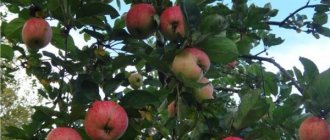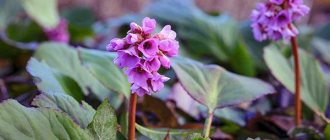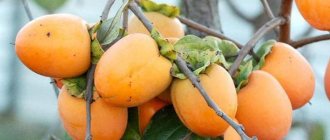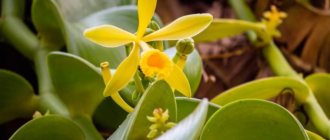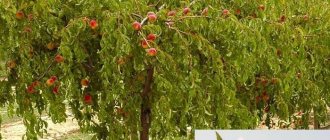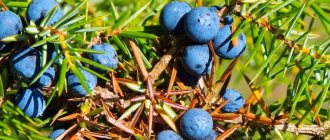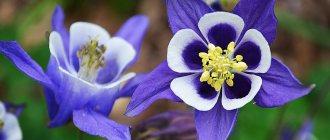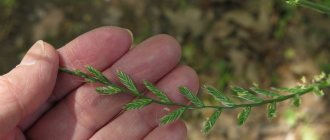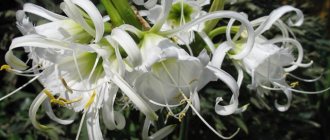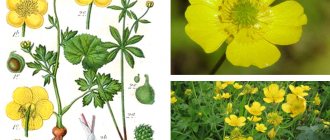Description
The colchicum flower is one of the perennial bulbous ephemeral plants. This means that the growing season of the autumn plant is short in time. The dark green leaves have an elongated lanceolate shape. The period of their development occurs in the spring, and in the summer the vegetation dies off and goes into a dormant state.
The most interesting thing begins with the onset of the first frost: funnel-shaped buds up to 3 cm in diameter emerge from the soil. At the same time, the height of the above-ground part is only 10-30 cm, and most of the perianth is hidden underground.
Although there are varieties that bloom in the spring along with primroses, it is the late varieties that have gained popular recognition. An oblong corm 3-5 cm long, covered with brown scales.
After flowering, colchicum manages to form a seed pod located in the ground. She will be born only with the first spring leaves.
Colchicum is one of the most poisonous inhabitants of the garden. Dangerous substances that cause skin irritation and burns are contained in all its parts. Even the water in which the flowers stood can cause harm.
Basic safety rules state that you should not touch a flower without gloves, and garden tools and equipment should be washed after finishing work.
Why colchicum or movement in the opposite direction
This plant has three amazing properties:
- Extraordinary tenderness and beauty.
- Seasonal rhythms of development that contradict natural logic.
- A combination of toxicity and medicinal properties.
These three contradictions contain the mystery and beauty of the plant. It is not surprising that the autumn crocus is also called winterberry or hellebore. And all because it blooms without time.
When all the normal plants have not only bloomed, but also scattered their seeds, this flower is just beginning to produce delicate pink flowers. His behavior in time is reminiscent of ephemeroids and ephemerals, only everything is the other way around.
Ephemerals and ephemeroids are plants that grow and bloom only in spring according to the principle - the earlier, the better. Then, when the leaves bloom on the trees, hiding the sun’s rays, these plants very quickly form fruit, scatter seeds and disappear from view for a long 7-8 months.
For this state of dormancy, they need the bulb as a storehouse for nutrients and a guarantee of vigorous spring flowering.
Autumn colchicum begins spring with fruiting. In early spring, first a sprout appears from the ground, then leaves, and after them the fruit - a capsule - comes into the light. Starting spring with fruiting in a temperate climate is, to say the least, original!
After the seeds ripen and the leaves fill the bulb with a new portion of organic matter, the plant goes into summer dormancy. And only in the fall, when organisms are massively preparing for winter, the autumn crocus begins to delight everyone. It pleases people with the beauty of delicate but bright flowers, similar to crocuses. However, the insects are the most happy. On short autumn days, when the sun is still warm, but there are almost no flowers, bees, bumblebees, butterflies and other nectar lovers are incredibly happy with the flowers of colchicum as a reward for their labors in pollinating all flowering plants.
During this short but very bright period, the fruit manages to set, but it does not have enough time to ripen, so the plant hides its future children underground for the winter. During the entire frosty period of winter, the ovary is located near the bulb under a layer of snow and earth. At this time, no development occurs - the crocus is now sleeping in its winter sleep.
So this plant is very cunning! The rhythm of his life is torn into two parts. This happens in some animals and plants that live in temperate deserts. Their active life is carried out only in spring and autumn. During the summer drought and winter frosts, they go into hibernation. By the way, most of them are in the bulb state during this period!
However, autumn crocus lives where there is a lot of water, and summers are mild, without scorching sun. Why does he need this broken rhythm of life?
And the trick is that in the fall, immortelle flowers are pollinated with great enthusiasm. In spring, ephemeroids all bloom at once, covering entire meadows with a multi-colored carpet. There may not be enough bees and bumblebees for such an abundance. And in the fall, the immortelle has no competitors. In addition, many grasses wilt in the fall, as a result of which immortelle flowers are visible far away, which also ensures a high level of fertilization.
And this plant needs to sleep in the summer in order not to waste its nutrient reserves in conditions of strong competition for the sun's rays.
Colchicum varieties
Among the whole variety of colchicums, there are luxurious specimens with yellow, pink, purple, snow-white or mixed colors. All the beauty and color richness is conveyed by the photos of colchicums presented below.
The following types are most popular among summer residents:
Autumn colchicum. Habitat: west and south of Russia, Europe. On one side the corm is convex, and on the other it is rather flat, the top is tubular. In the spring season the plant grows up to 40 cm.
Like all colchicums, the leaves die back in June or July. Traditional shades of inflorescences are white and soft lilac. But today more decorative forms have been obtained: dark red, purple flowers with a white center.
Colchicum is magnificent. Found in nature in Western and Eastern Transcaucasia, it prefers light forest edges. Reaches a considerable height, up to half a meter.
Flowers develop in autumn, on average there are 4-5 leaves and 1-3 flowers per bulb. Based on this type, breeders have developed new varieties with dark red, purple, and lilac inflorescences.
Colchicum variegated. Flowering begins in late autumn. The luxurious pink and purple speckled inflorescences are of value. One bulb produces 3 to 6 flowers.
Reproduction methods
Autumn colchicum can be propagated using bulbs and seeds. The second method is labor-intensive and requires more time and care for the plants.
Seeds
Full ripening of the seeds occurs in June. During this period, they are collected, soaked in water and sown. The soil for planting should be loose, well-drained, fertile. The seeds are planted at a shallow depth. From the moment of planting it will take about a year before the first shoots appear. Caring for seedlings consists of timely watering, thinning, removing weeds and covering for the winter.
From bulbs
In order to propagate autumn crocus by bulbs, they are dug up in August, cleared of soil, washed in clean water and a weak solution of potassium permanganate. After drying, they begin to plant them. The soil is dug up, fertilized with mullein, heavy soil is diluted with peat or sawdust.
If the bulbs are small or medium, planting is carried out to a depth of 15 cm, large ones are buried at 25 cm, located at a distance of 20 cm from each other. They do not require maintenance, except for the timely removal of weeds.
Important! After planting the bulbs in August, flowering can be expected after a month and a half.
Home growing rules
Colchicum can be grown in almost any area of the garden. But illuminated southern locations are best suited. The flower is not afraid of proximity to larger herbaceous plants, does not degenerate and pleases its owners every season.
To create beauty, you need to follow a few simple recommendations for planting, replanting and pest control.
Mr. Summer resident recommends: medicinal properties of the plant
Colchicum is used not only as a flowering plant, but also as a medicinal plant. Traditional medicine uses it as a laxative and diuretic. They reduce pain in diseases of gout and rheumatism.
The plant is poisonous and should be taken with great caution.
In official medicine, tablets, ointments and tinctures are used to help with cancer and neurological diseases.
A beautiful plant pleases the eye after the snow melts. It successfully helps fight complex diseases. It is worth planting in your garden plot and enjoying in spring or autumn.
Growing Colchicum from Seeds
The generative (seed) method of plant propagation will take you a lot of time, since crocus grown from seeds bloom only after 6-7 years, when the bulb has gained mass and gained strength. In addition, only a few spring-flowering species of colchicum reproduce generatively, as well as those species that do not form daughter bulbs, for example, yellow colchicum.
- Kolkvitsia: growing in the garden, types and varieties
You need to sow the seeds in fertile, moist, loose soil at a shallow depth immediately after they have ripened and collected - at the beginning of summer, but you should first soak them in water for a while. If you did not have time to sow the seeds right away, you will need to stratify the seeds for about six months by placing them in the refrigerator. Instead of soaking, it is better to pour the seeds into an oversized stocking or sock and place them in the toilet tank - each flush washes the seeds, removing inhibitors, after which the seeds germinate well.
Before sowing, try to arrange a drainage layer sprinkled with sand in the holes in the beds for colchicum. Seedlings appear only the following spring, but sometimes they take much longer to germinate. Caring for seedlings is very simple: thin out the seedlings, water them as needed until the foliage dies, remove weeds from the garden bed and cover young colchicums for the winter. Growing colchicum from seeds requires experience, time and patience, but those who do not try will not acquire the skill.
Try your hand at following our recommendations, and remember: negative experiences are sometimes more valuable than positive ones.
Colchicum transplantation
Colchicums can live 5-7 years in the same place, but then they need to be replanted. Transplantation can be carried out more often - once a couple of years. One of the signals that autumn trees have become crowded is the growth of bulbs and the shrinking of flowers.
It is better to replant the flower in August, but preparations begin in June. As soon as the leaves turn yellow, the bulbs are removed from the ground, cleaned and the material suitable for planting is separated.
The washed corms are immersed in an aqueous solution of potassium permanganate and left for 30 minutes, after which they are removed and dried well.
Before August, the prepared material is placed in a dry, dark place. Storage temperature no more than 25 degrees.
Preparing the tincture
Grind the colchicum root and pour 1/2 teaspoon of colchicum into 500 ml of boiling water. Apply 2 drops every 40 minutes. after meals, with water. Over time, increase the dose to 8 drops.
Due to its properties, this tincture is used for jaundice, whooping cough, dropsy, rheumatic, neuralgic pain, and heart weakness.
Colchicum is an unusual flower that does not require much effort to care for. Despite this, it will delight with its beauty on gray autumn days and decorate the garden. In addition, gardeners make tinctures from its corms and roots, which are beneficial to health and help in the treatment of many diseases.
Disease and pest control
Colchicum's worst enemies are slugs and snails, which encroach on leaf blades and flowers. You can deal with them using traps that make it difficult to access the flower. To do this, the space between the plantings is filled with gravel. A more effective way is to use chemicals, so-called molluscicides.
When overwatering, gray rot may appear. It can be identified by the presence of brown spots on the leaves. At the first signs of damage, the plants are treated with “Topaz”, “Kuproksat”, and the infected parts are removed.
Plant care rules
Caring for colchicum is very simple. The plant is unpretentious, and its periods of activity are already accompanied by natural favorable conditions. In spring, the soil is full of moisture from melting snow. There is no need to water the colchicum. However, it is recommended to monitor the moisture level in the soil. When flooding occurs, grooves are made to drain water and any remaining snow is removed. If dry weather sets in when the flowers appear, it is necessary to water the colchicums with a small amount of water.
During spring and summer, you should periodically weed the soil and remove weeds. In June, drying leaves are cut off so that the flower garden retains its attractiveness. The same procedure is repeated at the end of autumn, when flowering is completed. Before pruning, the shoots must have time to wither.
In autumn, compost and fallen leaves are distributed at the planting site. They provide sufficient shelter for the winter. In temperate climates, colchicums tolerate frost normally even in the absence of snow.
With frequent flooding of the soil, plants are affected by gray rot. Minor manifestations can be removed by treating with a fungicide (Topaz, Kuproksat, Champion). The bulbs and succulent leaves are loved by snails and slugs. Insecticides have practically no effect on them. Gardeners create mechanical obstacles for parasites by scattering crushed eggshells and ash.
Application
Due to the alkaloid content in the seeds and bulbs, all colchicums are poisonous plants. They are dangerous for livestock grazing on pastures and for people if you work with the plant with bare hands. The dangerous dose for humans of the alkaloid colchicine is 0.02 g (6 g of plant seeds). At the same time, parts of the plant (seeds, flowers and tubers) are used for medicinal purposes. Colchicum is not used in everyday life and cosmetology.
Seeds and bulbs are used in the manufacture of medicines for jade, in the treatment of leukemia, gout, radiculitis, and arthritis. In folk medicine, it is recommended to drink a tincture of tubers to obtain a laxative, diuretic and analgesic effect. An anesthetic ointment is prepared from the flowers. It is used to treat radiculitis, rheumatism, gout, and arthritis.
An ointment based on the plant is used to treat skin cancer, since colchicine delays the division of the cell nucleus. Pharmacists believe that colchicine also inhibits the growth of tumor cells.
